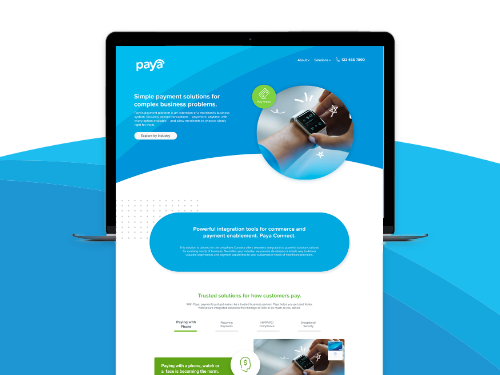In the sink-or-swim world of initial public offerings (IPOs), it takes a strategic and well-prepared player to survive.
There is no doubt that the decision to take a company public can open doors to vast opportunities and boundless potential growth. At the same time, it will inevitably bring challenges and require meticulous planning.
An IPO is a complex and multi-step process that involves several critical business activities. While strategic operational, financial, and legal planning undoubtedly lie at the heart of this journey, lest we not forget the equally vital role that marketing and communications strategy play in the lead-up to an IPO.
Though often overlooked, well-crafted marketing and communications efforts have the power to make or break your market entrance. Just think — How amplified could the impact of your operational, financial, and legal preparations be if the right emphasis and strategy were put into place to ensure your company’s public debut is met with the enthusiasm and support it deserves?
Things to Consider Before You Go Public
Luckily, Bluetext is no stranger to navigating the whirlwind that is an IPO from a strategic brand, PR, and marketing communications perspective. As one of the best brand strategy firms in the country with decades of experience helping companies through public transitions, we’ve acquired some critical knowledge and best practices over the years.
Without further ado, here are a few things to consider before you go public.
Brand Perception
What is your current brand reputation?
Take a pulse on the market perception. If the current perception is generally positive, you need to take measures that ensure you sustain and improve on that reputation. Both customers and competitors may look at your company differently post-IPO. if the converse is true, you may need to take additional steps to use the IPO as a fresh start to rebuilding your reputation and correcting any negative associations. Regardless your communications strategy is critical, both in the language you use and the mediums you announce upon.
Website
Where do investor relations fit into your website?
An investor relations page is essential for a company going public. Not only does it help you meet regulatory requirements, but also plays a pivotal role in building trust, credibility, and positive relationships with investors, ultimately contributing to the success of your IPO and long-term investor relations. You will need to consider where and how to implement investor relations and press releases into your core website as well as navigation structure so that this content can be easily found.
Where do your press releases live?
Popular options for housing investor relations content on your company’s website include live feed, single page, or external investor relations sites. Each has its advantages, so determining the right fit for your company is critical. If considering a live feed, you should be prepared with the technical resources to implement and maintain an external API as well as a frequent publishing velocity that ensures the feed remains active and not stale. If your company does not anticipate a need for such frequency, a simpler listing page is a more user-friendly option that can be built directly within your current CMS. A polished style for press releases and intuitive filtering systems on listing pages is key to making this option navigable by the general public and investors. If your investor relations will be more complex, or you have a large pool of active board members you may want to consider building a microsite or external platform that can house quarterly financial reports, the latest press release, and even private assets made available only to investors.
Internal & External Communications
What’s your PR strategy?
From an internal and external communications perspective, operate like a publicly traded company well before the IPO date as part of a sound readiness plan. Analyze your messaging shared with employees, partners, customers, investors, and other internal/external stakeholders so that it is in line with how you want to be viewed as a public company. Do these audiences understand your market? Are you positioned correctly within your market, or are you even positioned in the right market? The answers to all of these questions impact how you shape your PR strategy.
Once the IPO intention to go public is filed, there will be an extended period of time your company is limited in external communications. For that reason, establishing a steady drumbeat of news and content activity through press releases, case studies, events and awards, blog posts, thought leadership, social media, and strategic newsjacking can highlight full enterprise value. And when the quiet period begins and forward-looking statements, performance, and predictions are prohibited, PR becomes equally critical as your team must identify the best approach to maintain momentum despite these new limitations.
Finally, while your company will have a new segment of institutional and retail investors to account for once going public, recognize that “IR by PR” can be a slippery slope. Resist the urge to chase vaporware press releases and quick-hit fluff announcements you think will appease some anonymous social media poster complaining about the stock price. A short-sighted approach to delivering for investors may result in brief bounces but will undermine credibility and stock performance in the long term. Instead, build a PR strategy around substance that holds up under closer scrutiny and is affirmed every quarter when financial results are released.
What is your employee and stakeholder communication strategy?
Transitioning from a privately held company to a public offering can be a big adjustment both internally and externally. And it’s no secret that change is not always met with enthusiasm. It’s critical that you attract new attention, but also make current employees and stakeholders still feel valued and reassured that this is thought through and positive change.
Internal communication strategies can take many forms, from newsletter announcements to grander in-person celebrations. Compiling a list of “Employee FAQs” can be a strong first step in anticipating any internal concerns and officially addressing questions in a unified way. Some companies choose to send out email announcements or all-hands meetings to attach these FAQ documents. Some topics to consider include company benefits, shifts in leadership, new or consolidated positions, or dates and frequencies of upcoming board meetings. It’s important to make employees feel comfortable in this transition, and confident the culture they have come to love will be preserved.
External stakeholders, such as partners or customers should also be notified of the IPO transition but from a different lens. These audiences may be concerned that the company’s financials or offerings may shift under new ownership. This is where it is critical to take the approach of transparency and be open communicators of what the company’s new goals and objectives are. Again announcements should be created in a positive and enthusiastic tone, but take care to detail whatever is possible to publicly reveal about the company’s future. This can be timed strategically, potentially to announce the IPO, with a series of incremental follow-ups to reveal upcoming changes and the benefits they can look forward to.
Do you need a marketing partner to help realize your IPO ambitions? Contact Bluetext today.



